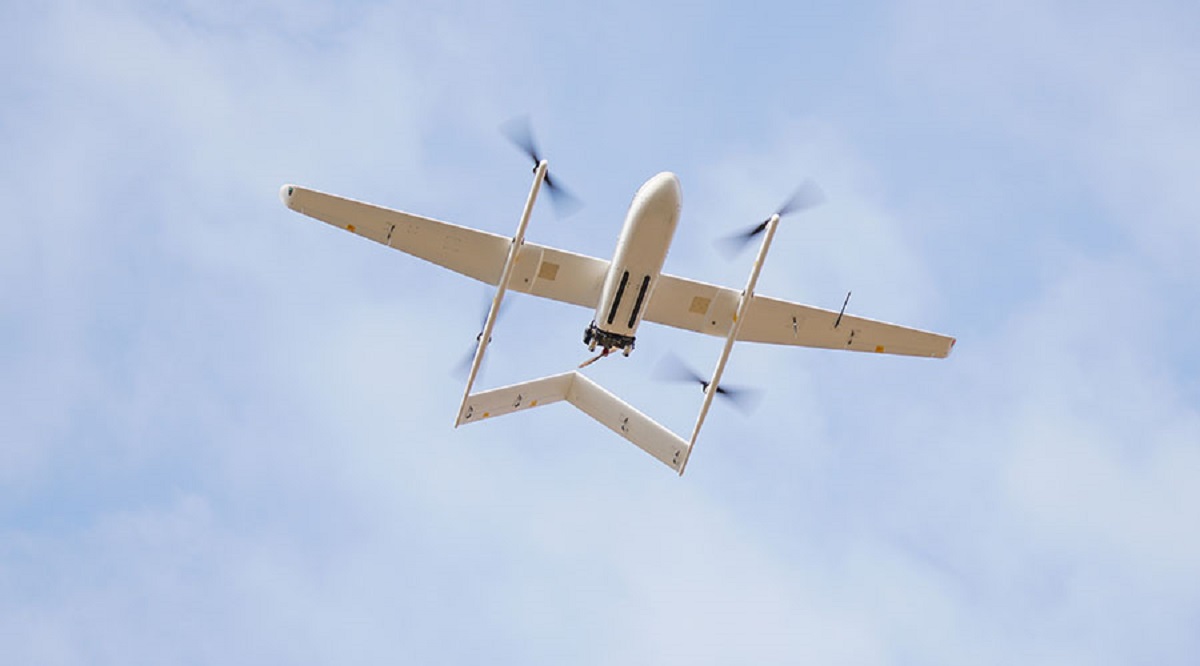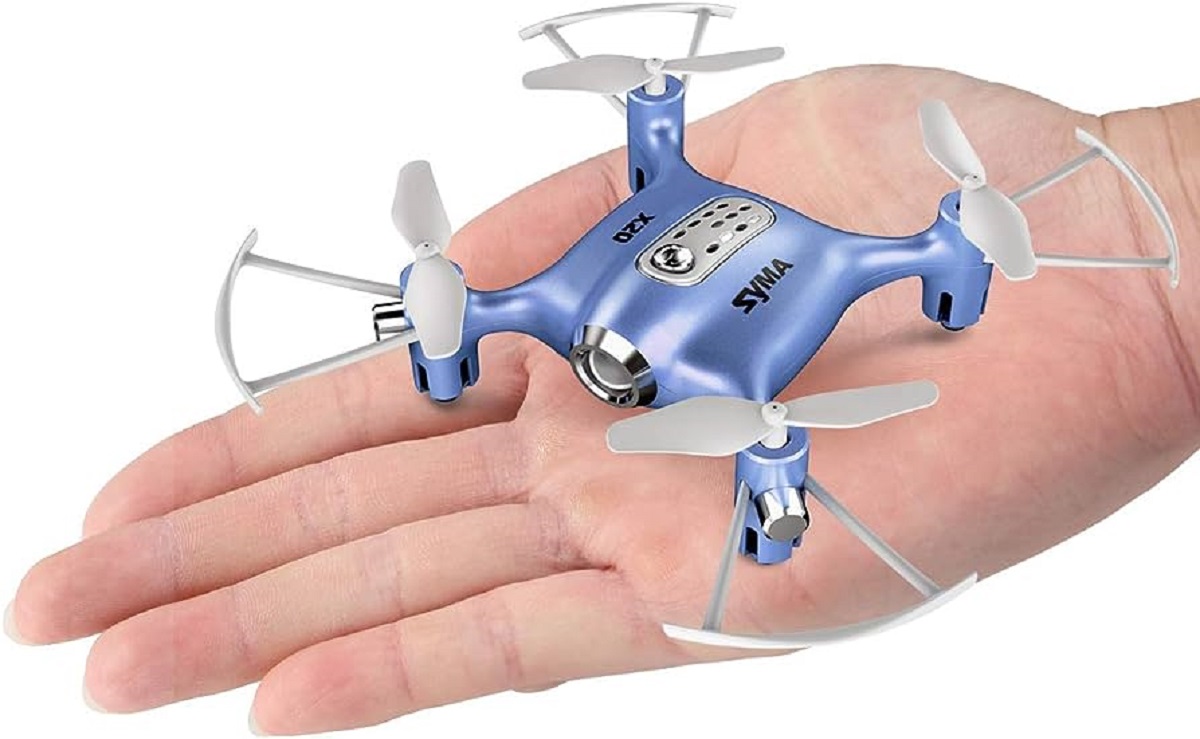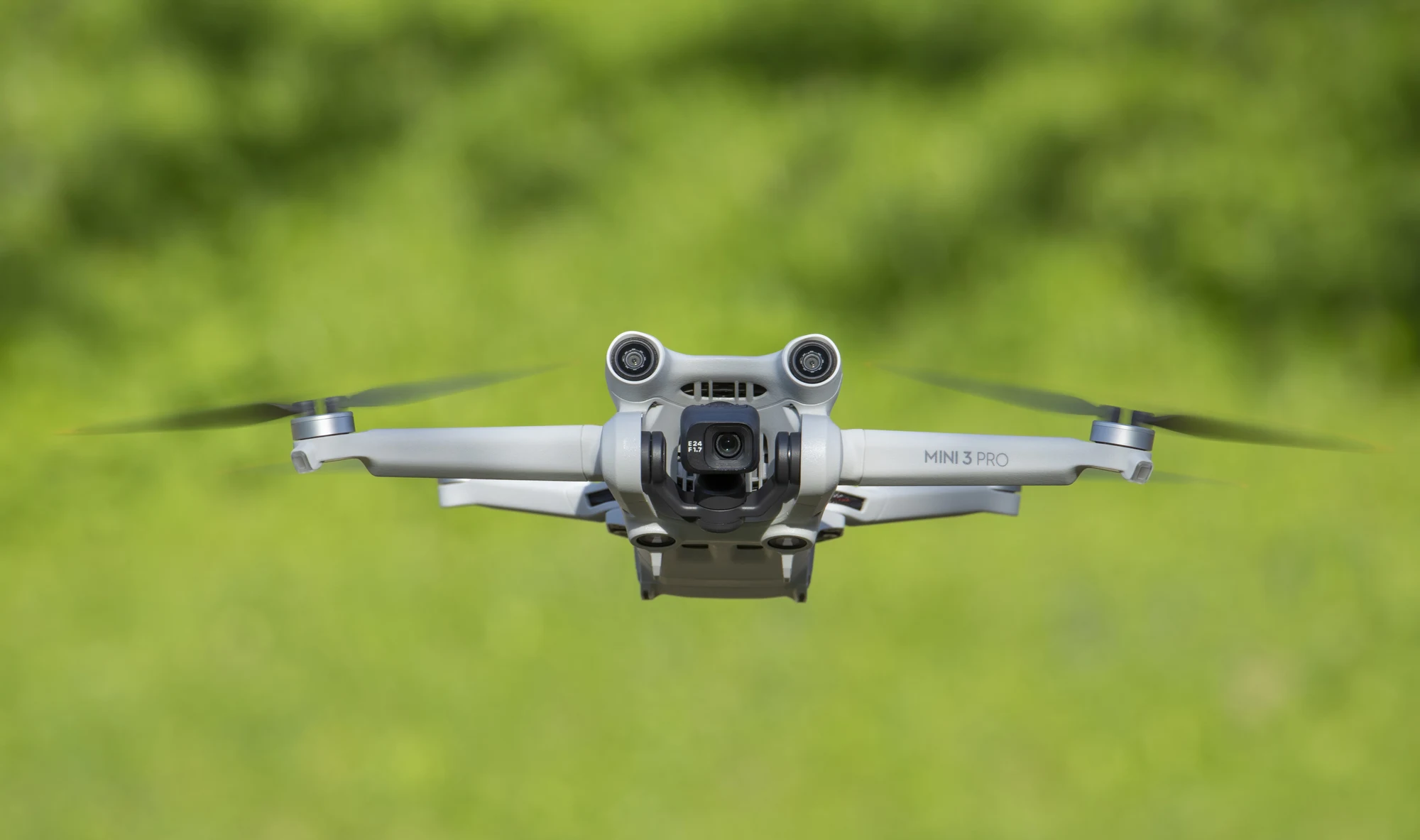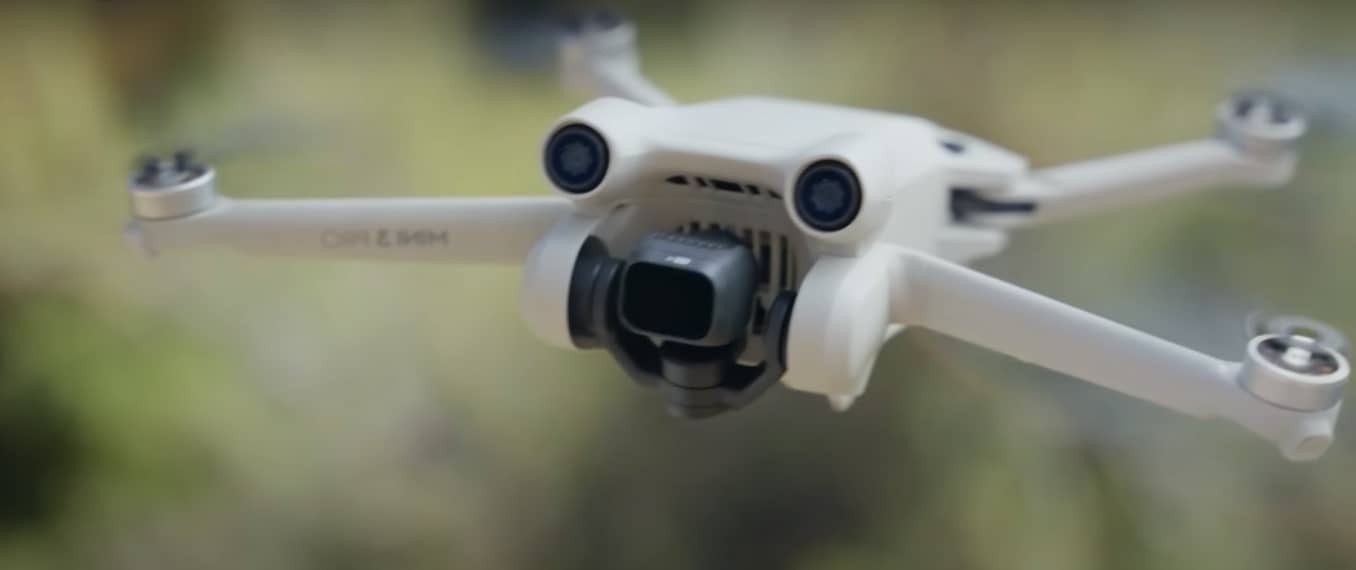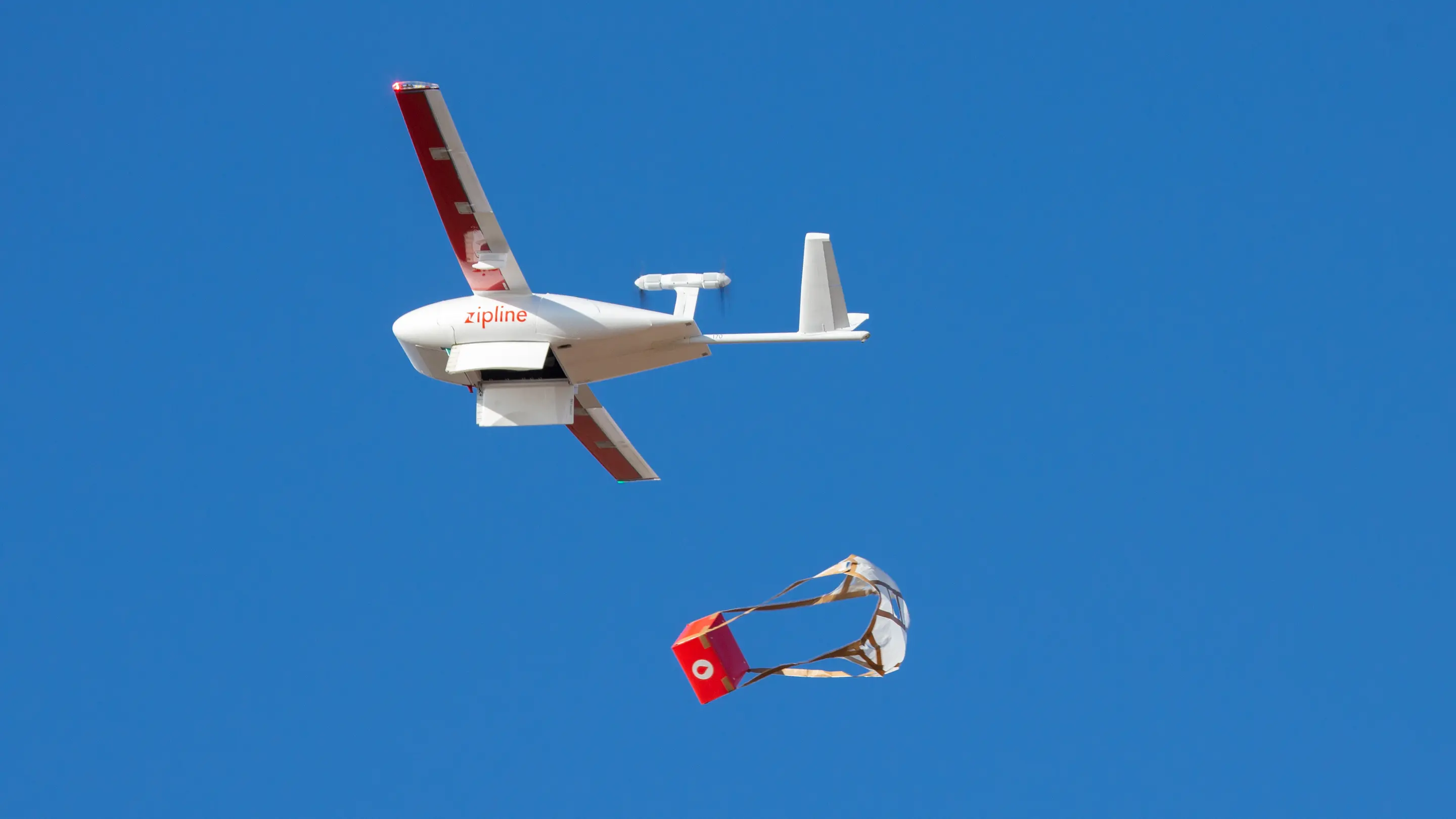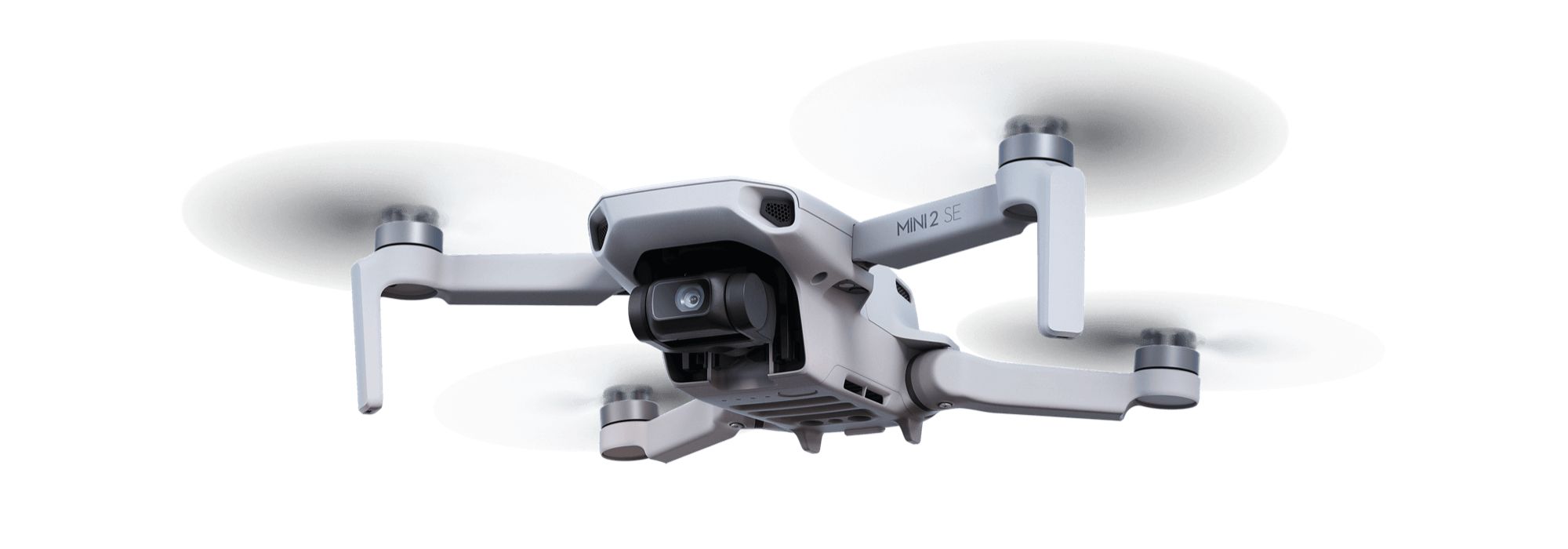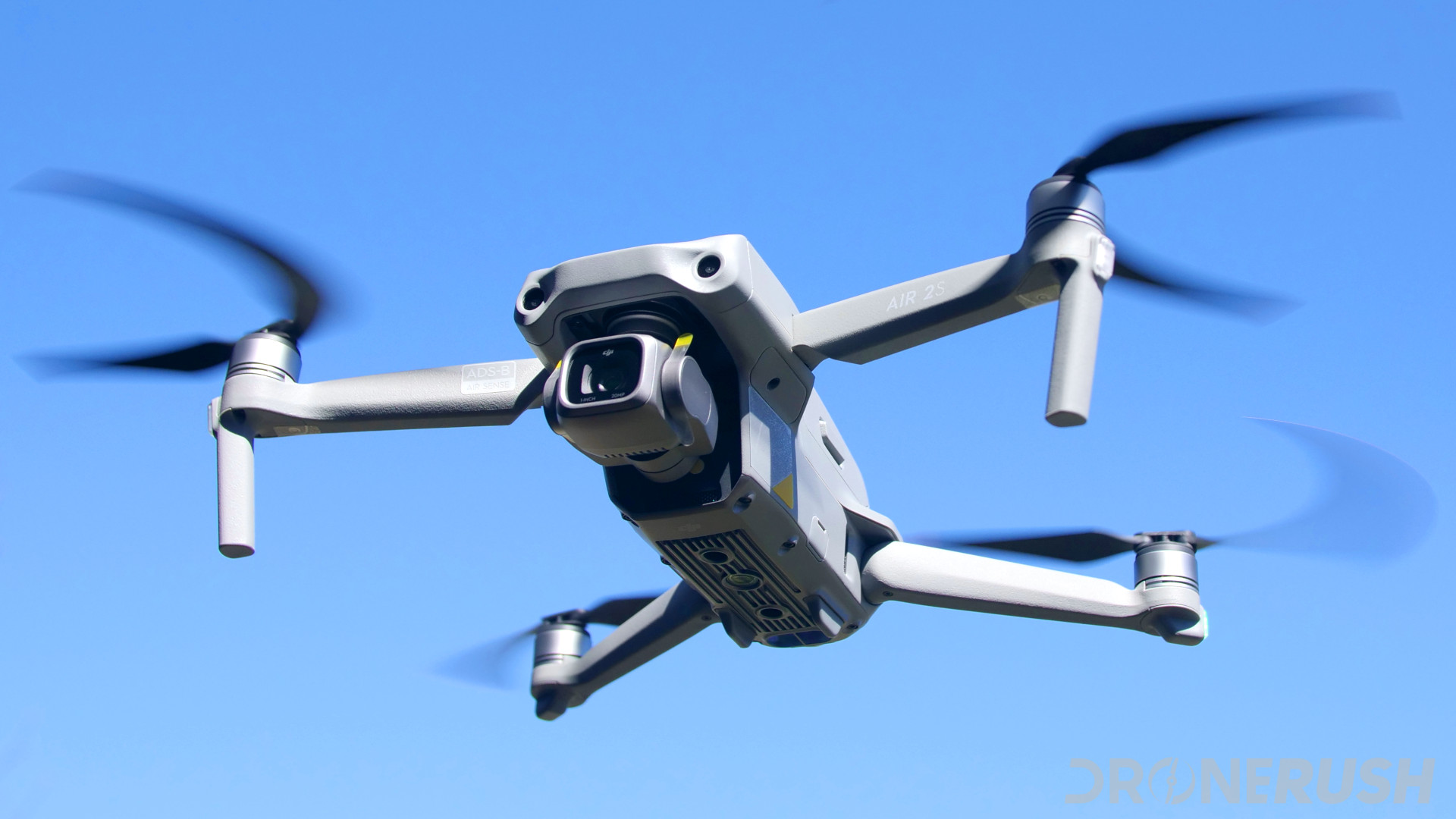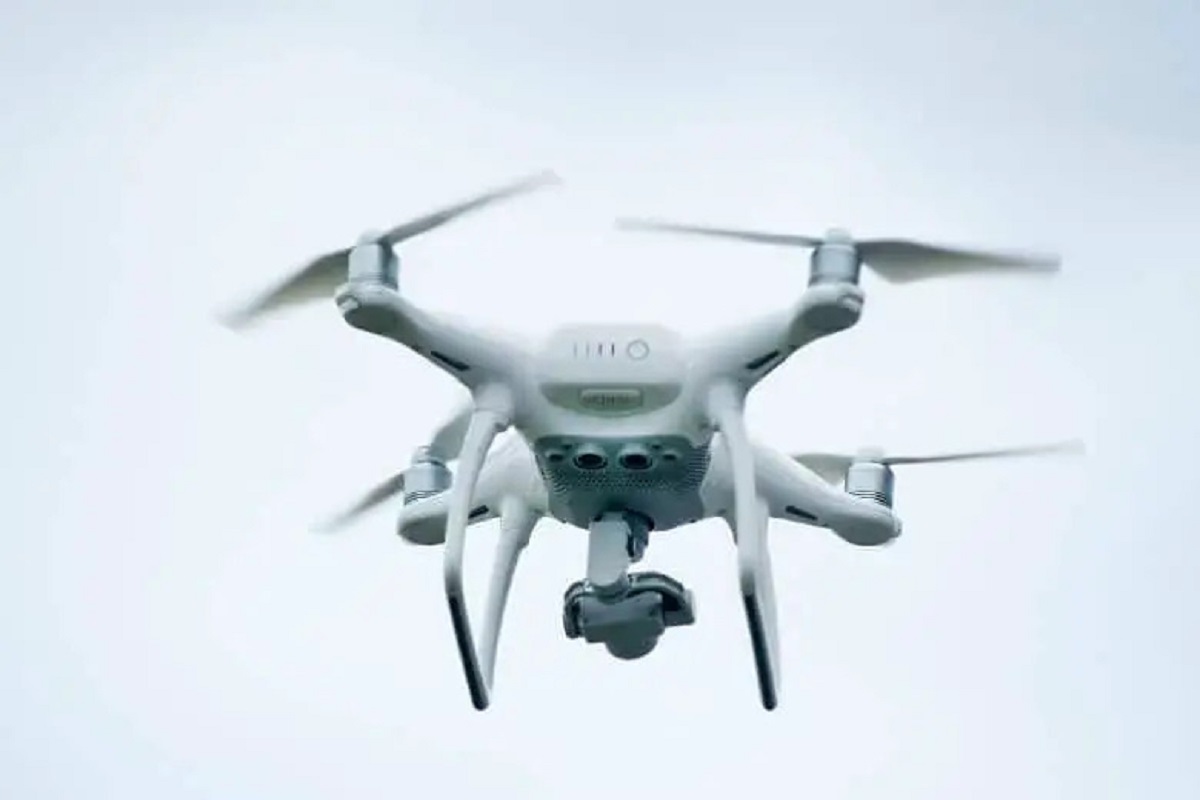Introduction
With the rise in popularity of drones, it has become increasingly important to regulate their flight altitude to ensure safety and prevent any potential hazards. Drones, also known as unmanned aerial vehicles (UAVs), are small yet powerful devices that can reach considerable heights. However, flying a drone too high can pose risks to aircraft, people, and infrastructure, making it crucial to establish responsible measures to manage drone altitude.
In this article, we will delve into the various parties involved in ensuring that drones do not fly too high. From the role of the drone pilot and manufacturers to government regulations and collaborative efforts, each stakeholder has a responsibility to prevent unauthorized altitude breaches.
The rapid growth of the drone industry has led to an influx of recreational and commercial drone users. As a result, it is essential to educate and inform drone operators about the importance of adhering to altitude limitations. By doing so, we can maintain the safety and integrity of the airspace for all users, whether they are flying manned or unmanned aircraft.
As the use of drones continues to expand, it is incumbent upon all stakeholders to work together to establish guidelines and protocols that promote responsible drone operation. This collaborative effort will ensure the safe integration of drones into the airspace and minimize the potential risks associated with flying them too high.
In the following sections, we will explore the roles and responsibilities of drone pilots, manufacturers, government agencies, air traffic control, drone tracking systems, and the consequences of flying a drone beyond the allowable altitude. By understanding the collective efforts required to maintain safe drone operations, we can foster a harmonious coexistence between drones and the broader aviation community.
The Importance of Regulating Drone Flight Altitude
Regulating drone flight altitude is of utmost importance to ensure the safety and integrity of the airspace. Drones can pose significant risks if they fly too high, interfering with manned aircraft, endangering public safety, and causing potential damage to property and infrastructure.
One of the primary reasons for regulating drone altitude is to prevent collisions between drones and manned aircraft. Drones flying at high altitudes can intrude into airspace reserved for commercial and private aircraft, increasing the likelihood of mid-air accidents. These collisions not only jeopardize the lives of pilots and passengers but also have the potential to cause catastrophic damage to planes, leading to loss of lives and substantial financial setbacks.
Moreover, regulating drone flight altitude helps protect public safety on the ground. When drones fly too high, there is a risk of losing control, and in the event of a malfunction or battery failure, the drone may fall from the sky, posing a danger to people below. By setting altitude limitations, authorities can mitigate such risks and maintain a safe environment for everyone.
Infrastructure, such as power lines, communication towers, and buildings, also needs protection from unauthorized drone flights. Drones flying at excessive altitudes can collide with or damage these structures, leading to disruptions in essential services and costly repairs.
Furthermore, regulating drone altitude is essential to preserve privacy. Drones equipped with cameras and other sensors can invade the privacy of individuals when flown too high and without proper authorization. Regulations can help ensure that drones are not used to infringe upon people’s privacy and personal spaces.
Overall, implementing regulations to control drone flight altitude is crucial for maintaining safety, protecting public and infrastructure, and respecting privacy. By establishing clear guidelines and emphasizing the importance of responsible drone operations, we can prevent accidents, encourage accountable drone use, and foster a positive relationship between drone operators and the broader community.
The Role of the Drone Pilot
The drone pilot plays a critical role in ensuring that drones do not fly too high and adhere to altitude regulations. As the operator of the drone, they are responsible for maintaining control, monitoring flight parameters, and abiding by the established altitude limitations.
First and foremost, drone pilots must educate themselves on the specific altitude restrictions in their operating area. Different regions and jurisdictions may have varying limits on how high a drone can fly. It is the pilot’s duty to familiarize themselves with these regulations and ensure compliance to avoid any potential penalties or risks.
When operating a drone, pilots should always keep a close eye on the drone’s altitude and use the built-in technologies and flight control systems to monitor and limit the vertical movement of the drone. Many drones today come equipped with GPS capabilities and altitude sensors, providing real-time feedback on the drone’s position and altitude. Pilots must leverage these tools effectively to prevent flying beyond the permissible height.
It is crucial for drone pilots to exercise caution and common sense when determining the appropriate altitude for their flights. They must consider factors such as nearby airspace restrictions, weather conditions, and the presence of manned aircraft. By assessing the situation and making informed decisions, pilots can ensure the safety of their drone operations and the integrity of the airspace.
Furthermore, drone pilots must stay up-to-date with any changes or updates to regulations regarding altitude restrictions. Drone regulations are continuously evolving, and it is the pilot’s responsibility to remain informed and adapt their flying practices accordingly. They should regularly review local regulations, stay connected with relevant authorities, and participate in training programs or educational resources to enhance their knowledge and skills.
In addition to following altitude restrictions, drone pilots should also respect the privacy and personal spaces of others. They must not use drones to invade privacy by flying too high and capturing images or videos without consent. Respecting the privacy of individuals and property is an essential aspect of responsible drone piloting.
Ultimately, the role of the drone pilot goes beyond simply flying the drone. They are responsible for ensuring compliance with altitude limitations, staying informed about regulations, and operating in a manner that prioritizes safety, privacy, and responsible drone use. By fulfilling their role effectively, drone pilots contribute to the overall goal of maintaining a harmonious and secure airspace for all users.
The Responsibilities of Drone Manufacturers
Drone manufacturers play a crucial role in ensuring responsible drone operations by shouldering various responsibilities related to drone altitude. As creators of these technological devices, manufacturers have a duty to design, build, and provide guidance on operating drones safely within set altitude limits.
One of the primary responsibilities of drone manufacturers is to implement altitude-limiting features in their products. By incorporating built-in altitude sensors and software controls, manufacturers can restrict the maximum height a drone can reach. These features serve as essential safeguards against flying drones beyond authorized altitudes and help prevent potential incidents or accidents.
Furthermore, manufacturers should provide clear and comprehensive instructions to drone operators regarding altitude limitations. User manuals and educational materials should explicitly state the maximum allowable altitude for specific models, ensuring that users are well-informed about the boundaries they must adhere to. Manufacturers should also emphasize the importance of responsible drone operation and the potential risks associated with exceeding altitude restrictions.
Manufacturers can also contribute to responsible drone use by incorporating geofencing technology into their drones. Geofencing enables drones to automatically recognize and avoid restricted areas, such as airports, military installations, or other sensitive locations. By implementing this technology, manufacturers can enforce compliance with altitude restrictions in certain designated areas and prevent drones from flying too high in restricted airspace.
Another crucial responsibility of drone manufacturers is to provide ongoing support and updates to their customers. As regulations and airspace requirements evolve, manufacturers should actively keep their customers informed about any changes related to altitude limitations. They should release firmware updates that reflect updated altitude restrictions and provide clear instructions on how to implement these changes. This proactive approach enables drone operators to stay compliant and ensures that manufacturers are actively contributing to a culture of responsible drone use.
Additionally, drone manufacturers can collaborate with regulatory authorities and industry organizations to establish best practices for drone altitude management. By participating in discussions and sharing technical expertise, manufacturers can contribute to the development of standards that promote safe and responsible drone operations. This collaborative effort is essential in addressing the complex challenges of managing drone altitude within the broader aviation ecosystem.
In summary, drone manufacturers have a significant responsibility in ensuring responsible drone operations, specifically regarding altitude limitations. By designing drones with altitude-limiting features, providing clear instructions, incorporating geofencing technology, and actively supporting users with updates, manufacturers contribute to the overall goal of maintaining safe and responsible drone use.
Government Regulations and Oversight
Governments play a critical role in regulating and overseeing drone operations, including setting and enforcing altitude restrictions. The establishment of comprehensive regulations ensures the safe integration of drones into the airspace and minimizes the risks associated with flying drones too high.
Government regulations pertaining to drone altitude serve several purposes. Firstly, they help to prevent conflicts between drones and manned aircraft. By setting clear altitude limitations, authorities can ensure that drones operate in separate airspace, reducing the likelihood of mid-air collisions. This protection is essential for the safety of both drone operators and those aboard manned aircraft.
In addition to safeguarding airspace, government regulations also help protect privacy rights. Drones equipped with cameras and other sensors have the potential to intrude upon individuals’ privacy when flown too high or in prohibited areas. Regulations can establish guidelines for drone operators regarding the respectful handling of personal privacy and limit the risks of unauthorized surveillance.
Furthermore, government regulations provide a framework for accountability and enforcement. They establish penalties for individuals or entities that violate altitude restrictions, creating a deterrent against irresponsible drone operations. By enforcing these regulations, authorities can promote responsible drone use and hold individuals accountable for any potential harm caused by flying drones too high.
To ensure effective implementation, governments often collaborate with regulatory bodies, industry stakeholders, and law enforcement agencies. These collaborations foster a holistic approach to drone regulation and oversight, taking into account input from various perspectives. They help create a comprehensive regulatory framework that addresses not only altitude restrictions but also other aspects of drone operations, such as registration, licensing, and safety standards.
It is also important for governments to monitor advancements in drone technology and adapt their regulations accordingly. As drones continue to evolve and become more capable, regulations must keep pace to address emerging challenges and ensure the continued safety of airspace. Regular reviews and updates of regulations and oversight mechanisms are vital to maintaining an effective and relevant regulatory framework.
Overall, government regulations and oversight are essential for the responsible management of drone altitude. By establishing clear guidelines, enforcing compliance, protecting privacy rights, and collaborating with stakeholders, governments contribute to the safe integration of drones into the airspace and promote a culture of responsible drone use.
Air Traffic Control’s Role in Managing Drone Altitude
Air Traffic Control (ATC) plays a crucial role in managing drone altitude and ensuring the safe and efficient integration of drones into the airspace. As the primary authority responsible for overseeing aircraft operations, ATC plays a vital role in providing guidance and oversight for drone pilots.
One of the main responsibilities of ATC is to ensure that drones operate within authorized altitudes. ATC controllers have access to real-time information about the movement of manned aircraft and can provide guidance to drone pilots to prevent conflicts and maintain separation. They can issue instructions to drone operators regarding altitude restrictions in specific airspace sectors or within controlled areas.
ATC controllers also serve as a direct point of contact for drone pilots. When a drone is operating in controlled airspace or near an airport, drone pilots may be required to communicate with ATC. By establishing clear lines of communication between drone operators and ATC, controllers can provide essential information and instructions to drone pilots regarding altitude limits, airspace restrictions, or any changes in operational conditions.
Furthermore, ATC plays a vital role in coordinating the integration of drones into the airspace with other aircraft. By actively monitoring drone activities and maintaining situational awareness, ATC controllers can manage traffic flow and maintain appropriate separation between drones and manned aircraft. This coordination ensures the safety of all aircraft operating in the airspace and helps prevent potential conflicts that can arise from drones flying too high and venturing into regulated airspace.
In some cases, ATC may be responsible for authorizing certain drone operations, such as those conducted for commercial purposes or in specific restricted areas. By carefully assessing the expected altitudes and flight plans of these drone operations, ATC can ensure that they do not pose any risks to ongoing air traffic or violate established altitude restrictions. This authorization process allows ATC to proactively prevent or mitigate potential hazards associated with errant drone operations.
ATC’s role is not limited to managing drone altitude solely for safety reasons, but it also contributes to overall airspace efficiency. By providing guidance to drone pilots regarding altitude limitations and ensuring compliance, ATC helps optimize the use of airspace, maximize capacity, and minimize disruption to other aircraft operations.
In summary, Air Traffic Control plays a crucial role in managing drone altitude. From providing guidance and oversight to issuing instructions and coordinating drone operations with manned aircraft, ATC ensures the safe and efficient integration of drones into the airspace. The collaboration between ATC and drone operators is essential to maintain a harmonious coexistence and promote responsible and compliant drone operations.
The Role of Drone Tracking Systems
Drone tracking systems play a crucial role in managing and monitoring drone altitude to ensure safe and responsible operations. These systems utilize advanced technology and software to track the location and altitude of drones in real-time, providing valuable information to regulatory agencies, law enforcement, and other stakeholders.
One of the primary functions of drone tracking systems is to detect and track the altitude of drones operating in a specific area. These systems utilize various sensors, including radar, GPS, and radio frequency identification (RFID), to accurately determine the altitude of drones. By providing real-time altitude data, tracking systems help identify any drones flying beyond authorized altitude limits.
Drone tracking systems facilitate efficient airspace management by enabling authorities to monitor and control the altitude of drones. Regulatory agencies and ATC can integrate the data from tracking systems into their airspace management processes, allowing them to proactively respond to altitude violations, issue warnings, and take appropriate enforcement actions.
Additionally, these systems can assist in identifying unauthorized drone flights and maintaining security. By implementing geofencing and altitude detection capabilities, tracking systems can send alerts and notifications whenever drones fly too high in prohibited areas, such as near sensitive infrastructure or restricted airspace. This early detection helps prevent potential threats and intrusions.
Drone tracking systems also support incident investigations and post-flight analysis. By capturing the altitude data of drones during flight, these systems provide valuable information for analyzing incidents or accidents. Investigators can evaluate whether altitude restrictions were violated, assess potential safety risks, and determine any contributing factors related to altitude breaches.
Another crucial role of drone tracking systems is to provide accountability and transparency in drone operations. By monitoring the altitude of drones, authorities can enforce regulations and hold drone operators responsible for any violations. Tracking systems can generate detailed altitude logs and reports, which can be used as evidence in legal proceedings or regulatory actions.
Furthermore, drone tracking systems can contribute to public safety and emergency response efforts. In situations where drones are deployed for emergency services, such as search and rescue operations, tracking systems enable authorities to monitor and manage drone altitude to ensure efficient coordination with other aircraft and ground operations.
In summary, drone tracking systems play a critical role in managing and monitoring drone altitude. By providing real-time altitude data, facilitating airspace management, detecting unauthorized flights, aiding incident investigations, and promoting accountability, these systems enhance the safety and integrity of drone operations. The integration of drone tracking systems with regulatory frameworks and ATC processes ensures the responsible and compliant use of drones within the airspace.
Collaborative Efforts for Ensuring Drone Altitude Compliance
Ensuring compliance with drone altitude restrictions requires collaborative efforts between various stakeholders, including regulatory bodies, law enforcement agencies, industry organizations, and drone operators themselves. By working together, these entities can establish a culture of responsible drone use and enhance safety in the airspace.
Regulatory bodies play a key role in setting and enforcing drone altitude limitations. Collaborating with industry experts and stakeholders, they develop regulations that address the unique challenges posed by drones while considering the needs of both drone operators and other airspace users. By involving the industry in the regulatory process, the resulting rules are practical, realistic, and capable of being effectively implemented.
Law enforcement agencies also play an integral part in ensuring drone operators comply with altitude restrictions. By enforcing regulations, conducting patrols, and proactively identifying and addressing altitude violations, law enforcement agencies help deter irresponsible drone use and protect public safety. Their efforts act as a deterrent, discouraging operators from flying drones too high or in restricted areas.
Industry organizations and associations have a vital role in promoting responsible drone operations. They educate their members about altitude limitations, provide training and resources, and encourage compliance with regulatory requirements. Additionally, these organizations often collaborate with regulatory bodies to address challenges, share best practices, and foster ongoing dialogue on drone altitude management.
Drone operators themselves must take responsibility for adhering to altitude restrictions and promoting safe practices. By understanding and complying with regulations, staying updated on airspace restrictions, and actively participating in education and training programs, operators contribute to the overall goal of maintaining safe and responsible drone use. They should also encourage a culture of accountability and self-regulation within the drone community.
Technology providers have a role to play in supporting altitude compliance efforts as well. By developing and implementing advanced technologies, such as geofencing and altitude-limiting features, these providers can help prevent drones from flying too high or entering restricted areas. Collaboration with regulatory bodies and industry organizations is essential to ensure these technologies align with evolving regulations and safety requirements.
Cross-sector collaboration is vital to ensure the effective implementation and enforcement of drone altitude restrictions. By establishing communication channels, sharing data, and fostering a cooperative approach, stakeholders can collectively address challenges and find innovative solutions. Regular consultations, working groups, and information sharing mechanisms facilitate the efficient exchange of knowledge and ensure the development of comprehensive strategies for managing drone altitude.
Ultimately, collaborative efforts are crucial for maintaining a safe and secure airspace. By bringing together regulatory bodies, law enforcement agencies, industry organizations, and drone operators, a collective approach can be adopted to ensure compliance with altitude restrictions, minimize risks, and foster responsible and accountable drone operations.
Consequences of Flying a Drone Too High
Flying a drone too high can have significant consequences, ranging from safety risks to legal ramifications. It is crucial for drone operators to understand and adhere to altitude restrictions to avoid these potential consequences.
One of the primary safety risks of flying a drone too high is the potential for collisions with manned aircraft. Drones that exceed altitude limitations can enter airspace reserved for commercial and private aircraft, posing a significant hazard to pilots, passengers, and the general public. Collisions between drones and manned aircraft can result in catastrophic accidents, causing loss of life and extensive property damage.
Additionally, flying a drone too high increases the risk of losing control of the aircraft. At higher altitudes, drones can be more susceptible to strong winds, turbulence, and other environmental factors that can lead to instability or system failures. A malfunctioning or unresponsive drone can fall from the sky, potentially causing injuries to people or damage to property upon impact.
Regulatory consequences are another significant consideration. Violating altitude restrictions can lead to legal repercussions. Authorities can impose fines, penalties, or even suspension of drone operator licenses for breaching regulations. These consequences are in place to deter unsafe and irresponsible drone use and ensure compliance with established rules.
Flying a drone too high can also have negative privacy implications. Drones equipped with cameras can invade the privacy of individuals when flown beyond authorized altitudes. Unauthorized surveillance, capturing images or videos without consent, can result in privacy violations and legal actions against the drone operator.
Moreover, flying a drone too high can disrupt essential services and infrastructure. Drones that enter restricted airspace or collide with communication towers, power lines, or buildings can cause damage, leading to disruptions in services and costly repairs. This disruption can impact public safety, communication networks, power supply, and more.
Incorporating technologies such as GPS and altitude sensors in drones has improved monitoring and tracking capabilities. Authorities have the ability to investigate altitude breaches, and evidence obtained through drone tracking systems or eyewitness reports can be used in legal proceedings.
It is vital for drone operators to be aware of these potential consequences and the importance of responsible drone operations. By understanding and adhering to altitude limitations, drone operators can contribute to the overall safety of the airspace, protect privacy rights, avoid legal trouble, prevent accidents, and ensure a harmonious coexistence with other airspace users.
Conclusion
The regulation and management of drone altitude are essential for maintaining a safe and secure airspace. The collaborative efforts of various stakeholders, including drone pilots, manufacturers, government bodies, air traffic control, tracking system providers, and industry organizations, are vital in ensuring compliance with altitude restrictions and promoting responsible drone use.
Drone pilots have a responsibility to educate themselves about altitude limitations and operate their drones within authorized heights. By using built-in technologies, staying informed about regulations, and exercising caution, pilots can play a crucial role in preventing altitude violations and promoting safety.
Manufacturers of drones have the duty to incorporate altitude-limiting features, provide clear instructions on altitude restrictions, and actively support and update their customers on changes in regulations. By fulfilling these responsibilities, manufacturers contribute to the safe and responsible use of drones.
Government regulations and oversight play a fundamental role in establishing clear guidelines, enforcing compliance, and promoting public safety. Collaborations between regulatory bodies, industry organizations, and law enforcement agencies are essential for developing effective regulations, enforcing them, and adapting to the evolving landscape of drone technology.
Air traffic control is critical in managing drone altitude by providing guidance to drone pilots, coordinating their integration into airspace, and ensuring the safe separation of drones and manned aircraft. The incorporation of tracking systems enhances the monitoring and enforcement of altitude restrictions, aiding in incident investigations and improving overall airspace management.
Flying a drone too high can have severe consequences, including safety risks, privacy infringements, legal repercussions, and disruptions to essential services. By adhering to altitude restrictions, drone operators can avoid these consequences and contribute to the safe and responsible use of drones.
In conclusion, the collaborative efforts and responsible practices of all stakeholders are paramount in managing drone altitude effectively. By working together and upholding the regulations and guidelines in place, we can ensure the safety, privacy, and integrity of the airspace while embracing the exciting potential of drone technology.







